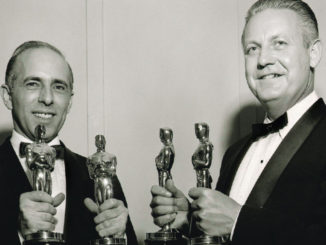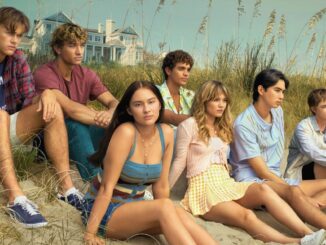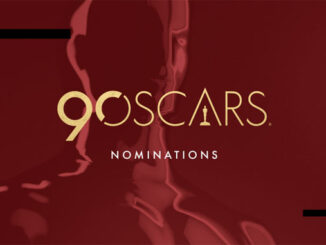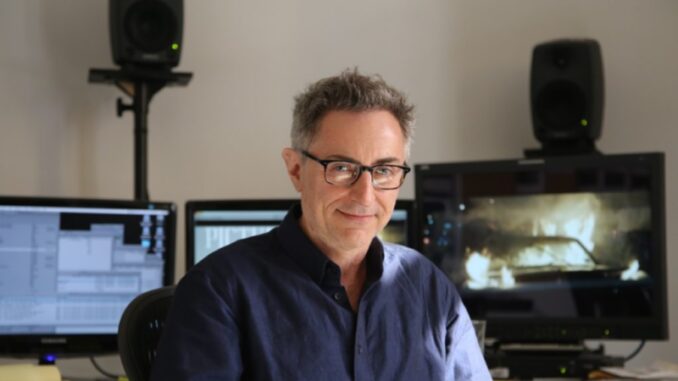
By Rob Feld
Christopher Tellefsen was an art major at The Cooper Union, studying everything from photography to sculpture to painting, but didn’t find his medium until he took an experimental film class with Robert Breer. “I had always been obsessive about movies but had no context for entering into the making of them,” he recalls. “I was just galvanized when I put two pieces of film together. My initiation was in experimental filmmaking, but I had a feel for narrative structure.”
After a stint working at RAI Italian television, an unmentionable Jackie Mason comedy, an apprenticeship with Thelma Schoonmaker on “The Color of Money,” and some time at Martin Scorsese’s archive, Tellefsen took on editing a short film to not lose sight of his main ambition. That project connected him to Whit Stillman and “Metropolitan,” which became a quintessential New York indie hit of the 1990’s. Since, his career has seen repeated, highly successful collaborations with Stillman, Wayne Wang, David O. Russell, Milos Foreman, and Bennett Miller, not to mention single films with a wide array of filmmakers.
His latest is the razor-sharp, darker-than-dark comedy, “The Menu,” directed by Mark Mylod. The film sees a couple, Margot (Anya Taylor-Joy) and Tyler (Nicholas Hoult), traveling to an island to dine at an exclusive restaurant, Hawthorn, where the celebrated Chef Julian Slowik (Ralph Fiennes) has prepared a lavish tasting menu for his special guests. The guests’ various secrets are revealed over time, but none are greater than the violent, vengeful intentions of Chef Slowik.
To say the film walks a number of extremely fine tonal lines is to understate the accomplished balancing act undertaken by Tellefsen and Mylod. Humor, revulsion, schadenfreude, sympathy, hope, and despair all ebb and flow, moment to moment. Only a lockstep, shared vision between a uniquely talented director and editor team could have pulled it off. (Warning: Spoilers follow.)
CineMontage: You have worked with some true icons. What do you find you need from a director to have the most successful collaboration?
Chris Tellefsen: I find that it is always a different experience with each individual director. Clearly the most you wish for in a director is for them to have a strong handle on the intention and tone of the film. [Working with] Milos Forman was a whole world in itself. We worked very closely together after shooting. During shooting, I was just reacting to the dailies. I was caught up at the end of the first week and had a scene I tried a few versions of. Milos responded and suggested that I try 10 versions of each scene that came my way, exhausting possibilities. After shooting ended, he came into the edit and we worked together from 9:30am to 10:00 pm. It was very intense.
CineMontage: Is there a collaborative process you have come to prefer or are they entirely director dependent for you?
Tellefsen: I prefer to react to footage, screen with the director and then absorb notes and intentions and do another pass. Cycling in this manner to keep discovering new ways of approaching the material. It’s an effective process. I can also handle a hoverer. I like to be challenged and pushed, making discoveries all the way through the mix. Sound can trigger new ideas.
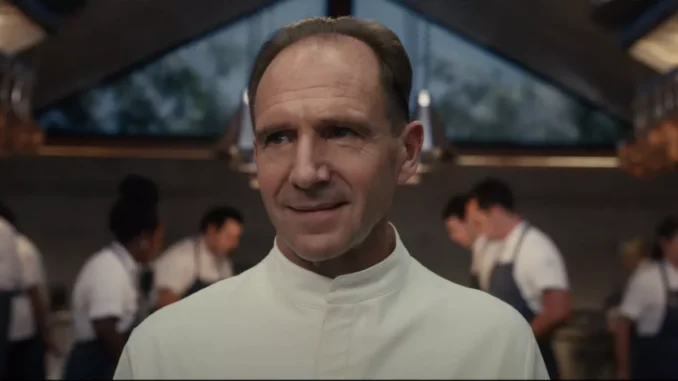
CineMontage: When working with Bennett Miller on “Capote,” where did you come down on the need to make Truman Capote relatable as a character?
Tellefsen: A big part of making him relatable is the character of Nell Harper Lee. She is the emotional entrance into the movie. With her, in a way, you could make Capote as crazy and repellent as necessary. But making Capote authentic was the key, not making him relatable, because he was so specific. In the original script and shoot, there was no party at the beginning, which became a key thing. Without the opening party scene, we just had the reveal of the dead girl, then Capote reading the paper and cutting out the article—we reshot that scene, too. Otherwise, it went straight into him making the decision to write about the murder and the train to Kansas. Without shooting that contextual party scene, you didn’t feel him as a fish out of water enough when he was in Kansas. Adding the party scene showed you 1959, where he’s openly gay, and this world that swirls around him. People hang on his every word. Then you get to see him make the decision to go to Kansas. That contextualized and propelled the story.
CineMontage: What were your conversations like with Mylod for “The Menu?” How did you talk about the objective? Tonally, it is distinctive, but it could have been anything in different hands.
Tellefsen: Getting to the essence of it all. We discussed finding the balance of this ensemble piece, how to hit all the strong notes of nuance, and the obsessive artistry of Chef Slowik. We spent a lot of time on the set up. There were many setup scenes that needed to be dropped to strengthen the way into it. It was also important to leave enough mystery without being confusing, and to get the comic and the tension timing right. In the script, Margot is still the first one to get Slowik’s intentions. She asks Slowik, “We’re all going to die, aren’t we?” Originally, in the following scene, he said to the entire group, “You’re all going to die,” but we took that out to keep people guessing what’s going on. I think that was an enormous help.
Also, it was important to keep it moving and active, since 95 percent of the movie takes place in one room. It had to be relentless while quieting it down before a big shift. Playing the surprises. I saw that the best way to deal with the Cooks was to keep them silent. After the first day of dailies, I suggested that they shouldn’t smile when they’re serving; that they should be straight faced. That was kept on and was an effective touch. In addition, we discussed the Luis Buñuel film “The Exterminating Angel,” which was an inspiration for the writers and was also a film that was important to both Mark and me—the parallels being issues of class and the surreal inertia of the privileged who in a way can’t really comprehend the dangers they are facing, which has comic/tragic edges to it.
CineMontage: What were the critical narrative elements to track and what needed to be serviced for it to be successful? Was there a “true north” that would always see you through or to not lose track of?
Tellefsen: There were many threads to be constantly conscious of, with the balancing act of not tipping our hat too soon while keeping it buoyant and on its toes at all times. Is this theater or reality? The Lillian and Ted characters were the points of, is it a show? More information was given than was actually necessary and we wanted to keep things interesting enough that the audience would always be leaning forward. There was an opening scene on the boat where Lillian talks about the whole history of Chef Slowik: that he rose, disappeared, reappeared somewhere in a place where she rediscovered him, which spawned this place, Hawthorne. But it was too much. One classic thing from an editorial point of view is that scripts are written, especially the beginning of a script, to let the reader enter it more. We didn’t need it. So, we ultimately did all that sparingly.
CineMontage: How would you characterize the footage you got from Mylod? Did it constrain your selections, or did it give you a lot of freedom to explore?
Tellefsen: The courses were shot very loosely. Every actor was mic’d during each shot in the dining room. Mark wanted to emulate the overlapping dialogue approach of Robert Altman. A certain number of shots were timed from table to table, mostly multiple cameras to heighten the simultaneity of the multiple diners’ experiences. I did many versions with more overlapping but had to shape it for more focus and emphasis. Avoiding getting too muddy was important. The Amuse and the Breadless courses had the most overlapping camera movement, which gave great opportunities to make fun sharp cuts from table to table. Chef always had to be a presence with Elsa slowly passing through and overseeing, with the cooks always active. This confluence was a balancing factor at all times. Working up to the chaos of “The Mess” course, when all hell breaks loose. Interestingly, the drowning scene following that was reshot. The first attempt was too elegant and seamless in style. Mark insisted on reshooting with multiple hand-held cameras to augment the devolving of the situation. The actors were fantastic, each table a world of their own with much fun improvisation. It was a great script and they brought all this great, spontaneous life to it.



